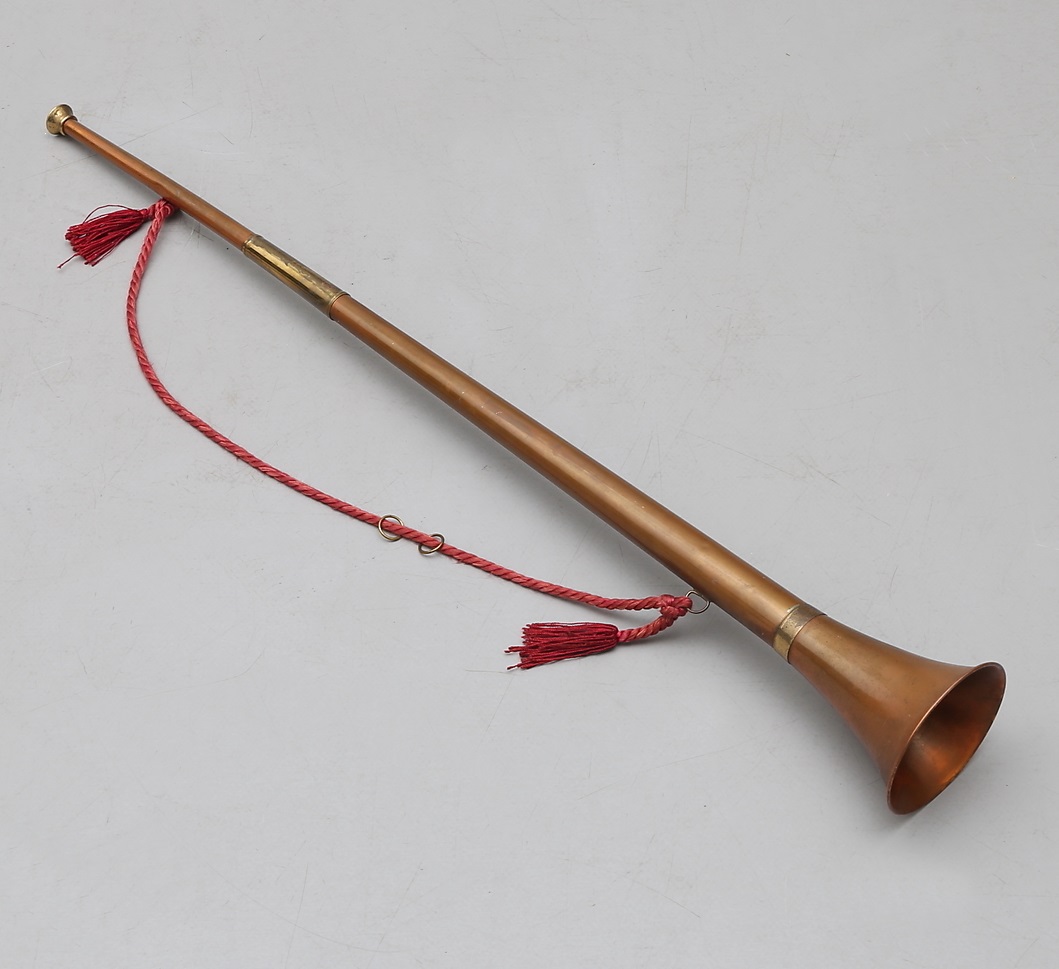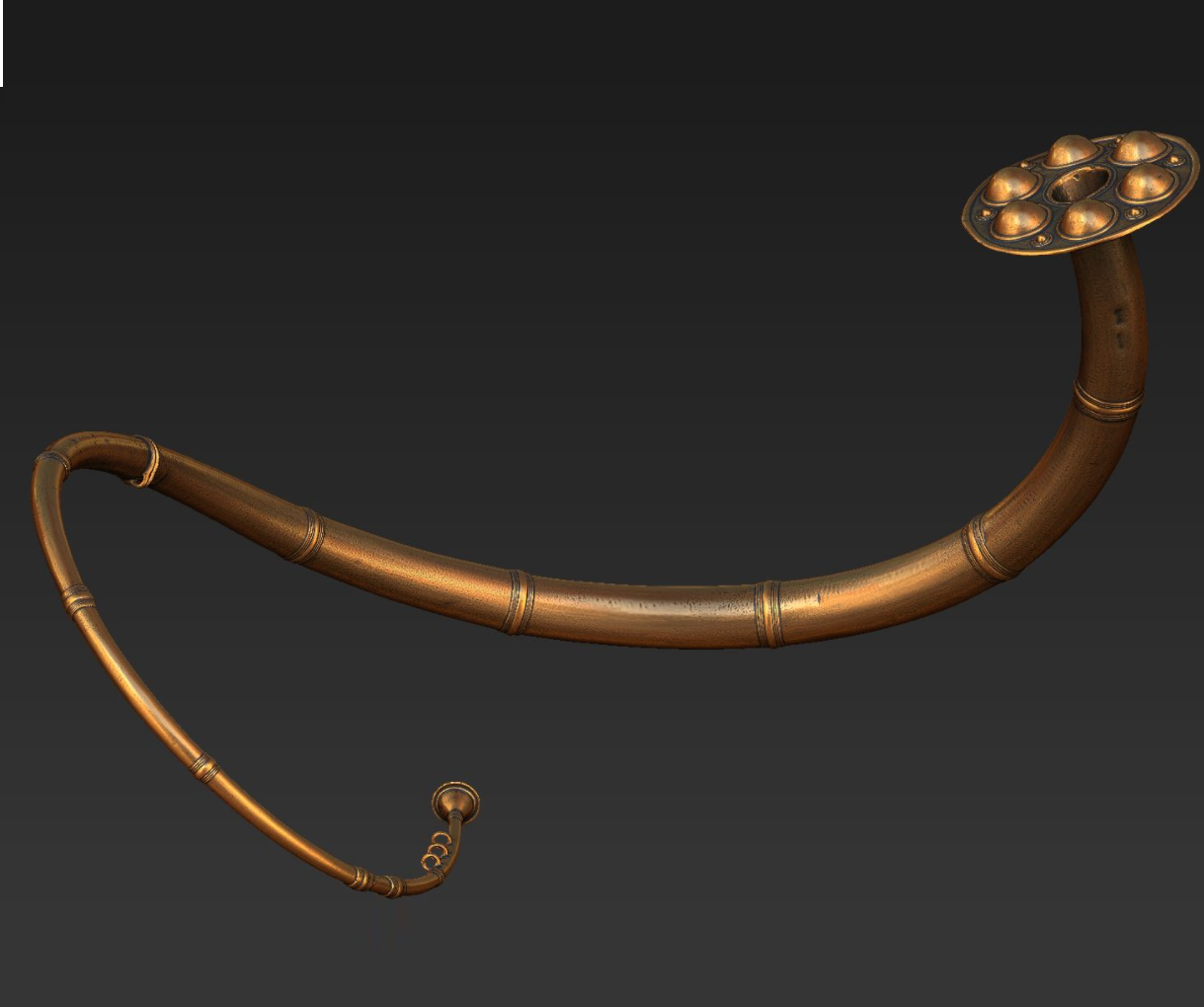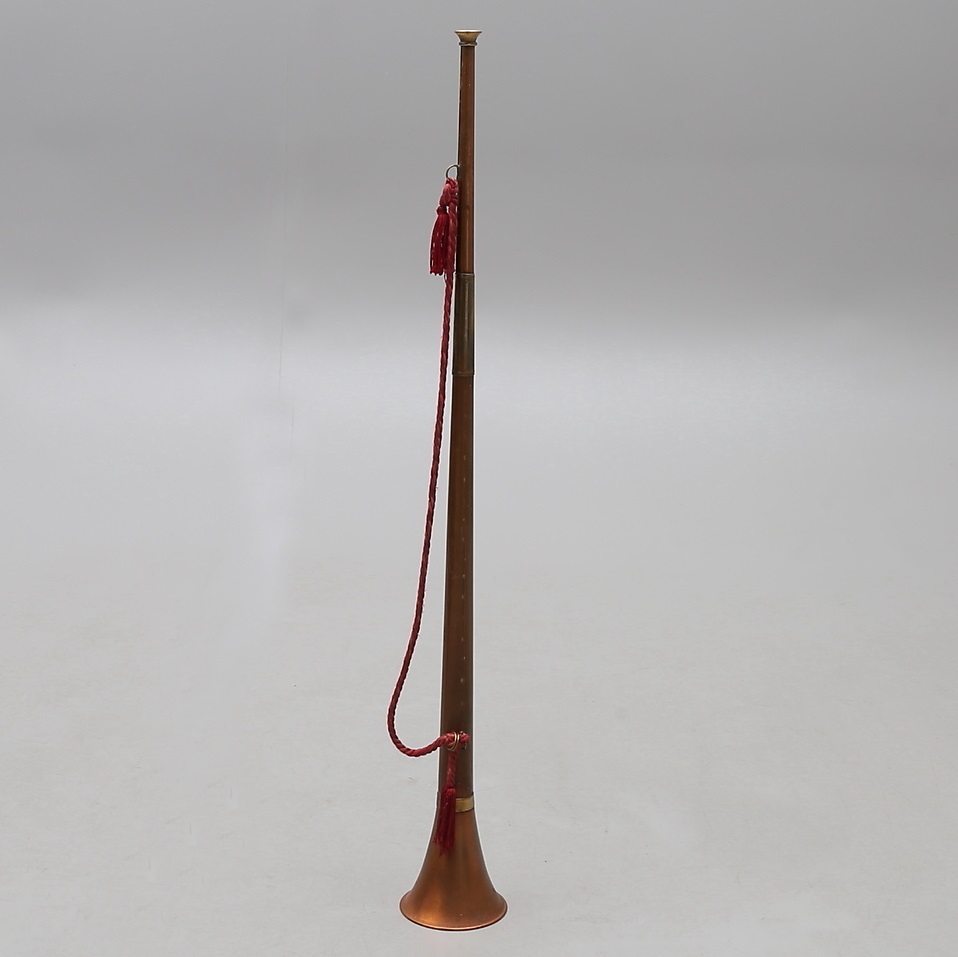Lur
Brass Winds
Europe
Between 0 and 1000 AD
Video
The lur is a unique and ancient musical instrument that has been used for centuries in various cultures, particularly in Northern Europe and Scandinavia. It is a long, curved or straight brass instrument traditionally associated with ceremonial and military functions. The instrument has no finger holes, meaning it produces sound based solely on the player’s ability to control their embouchure and breath pressure. The sound of the lur is often described as powerful, resonant, and commanding, making it an ideal instrument for outdoor performances and large gatherings.
Type of Instrument
The lur falls under the category of brass instruments, though historically, some versions have been made of wood. It is an aerophone, meaning that it produces sound through the vibration of air. The instrument is similar to a natural trumpet, as it does not have valves or keys to alter pitch. Instead, different notes are played by adjusting the airflow and lip tension, a technique common among brass instruments.
History of Lu
The lur has a long history, dating back to at least the Bronze Age. Most of the earliest known lurs have been discovered in Scandinavia, particularly in Denmark, Sweden, and Norway, though similar instruments have also been found in other parts of Europe. Archaeological evidence suggests that the lur was used as early as the 10th century BCE, making it one of the oldest known brass instruments. The instrument continued to be used in different forms throughout history, from the Viking Age to medieval and modern times.
Made Of
Traditionally, lurs were made from either metal or wood. The Bronze Age lurs found in Scandinavia were crafted from bronze, typically cast in a single piece or made from multiple sections soldered together. Wooden lurs were also prevalent, particularly among shepherds and hunters, who used them as signaling devices. Modern versions of the instrument are usually made of brass or other durable metals to enhance their sound quality and longevity.
Types of Lur
There are two primary types of lurs:
Bronze Lurs – These are curved and resemble the letter “S” or a shepherd’s crook. They are typically found in archaeological discoveries from the Bronze Age and are considered ceremonial instruments.
Wooden Lurs – These are straight and often used by Scandinavian herders. They resemble long, wooden trumpets and have a more functional role in communication rather than ceremonial use.
Characteristics
The lur is characterized by its long and often curved shape, which allows it to project sound over long distances. The lack of valves or keys means that it functions similarly to a natural trumpet, requiring the player to use lip tension and breath control to produce different notes. The instrument is generally played in an upright position, with the bell facing outward or slightly upward.
Sound Production
Sound is produced in the lur by buzzing the lips into the mouthpiece, much like other brass instruments. Because it lacks valves or holes, the notes that can be played are limited to the natural harmonic series. This means that the player can only produce a set number of tones, determined by the length and shape of the instrument. The resonance of the lur gives it a bright, commanding sound that can be heard over long distances.
Playing the lur requires strong breath control and precise lip movement. Since it does not have valves, all pitch variations must be controlled by the player’s embouchure and air pressure. The technique is similar to playing a bugle, where the musician adjusts their lips and breath to produce different notes. The instrument is often played in ensembles, where multiple lurs are used together to create harmonic and rhythmic patterns.
Roles in Music
The lur has been used in various musical settings throughout history. In ancient times, it was primarily a ceremonial and signaling instrument, used in processions, battles, and religious rites. In Scandinavian folk music, wooden lurs were used by shepherds to communicate across vast landscapes. In modern times, the lur is occasionally used in historical reenactments, classical compositions, and folk music ensembles.
Cultural Significance
The lur holds great cultural significance, especially in Scandinavia. It is often associated with Viking traditions and Nordic mythology, where it was believed to have magical or divine properties. The instrument is frequently depicted in ancient carvings and artifacts, highlighting its importance in rituals and ceremonies. Today, the lur is an emblem of Nordic heritage and is sometimes played at national events and cultural festivals.
The instrument’s historical and cultural significance has made it a symbol of strength and tradition. Despite its ancient origins, the lur continues to captivate musicians and historians alike, preserving its legacy as one of the most remarkable musical instruments in history.
FAQ
What is the Lur musical instrument?
The Lur is an ancient wind instrument, typically made of bronze or wood. It was used in Scandinavia during the Bronze Age for ceremonial purposes. Modern versions exist in Nordic folk music. It produces a deep, resonant sound.
How is the Lur played?
The Lur is played by blowing air through its mouthpiece, similar to a trumpet. It lacks valves or finger holes, so pitch control depends on lip tension. Players use harmonic overtones to create different notes. The instrument requires strong breath control.
What is the historical significance of the Lur?
The Lur was used in Nordic Bronze Age rituals and possibly for signaling. Archaeological findings suggest it held religious and military importance. Many Lurs have been discovered in bogs, well-preserved over millennia. Its legacy continues in Scandinavian culture.
 Links
Links
References
Other Instrument
Categories




















